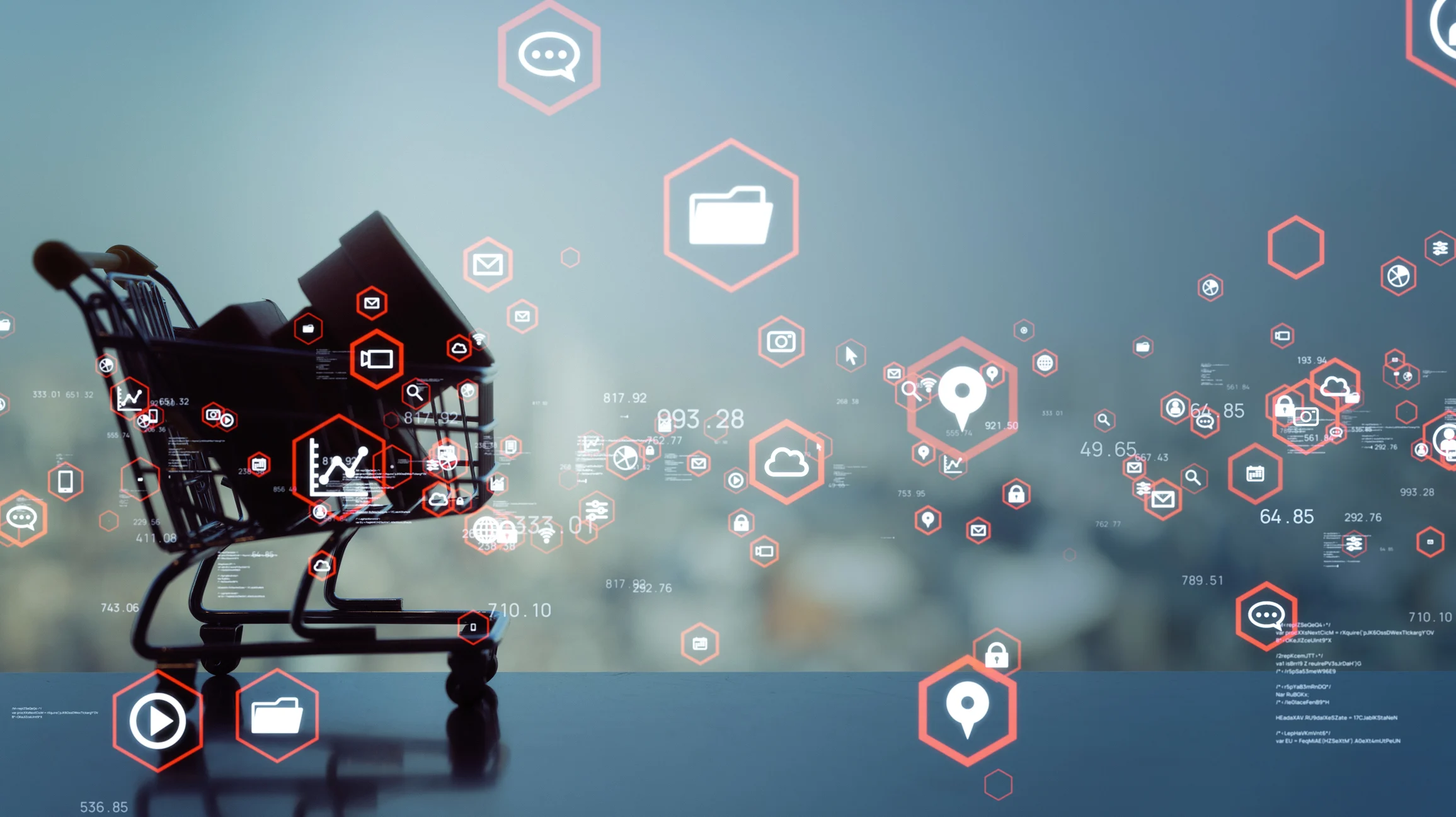The world of online shopping is evolving at lightning speed. Not long ago, simply having a website was enough for a retailer. Today, e-commerce involves immersive technologies, data-driven personalization, and seamless shopping across devices.
Global retail ecommerce sales have already surpassed $4 trillion in 2024 and are projected to reach $6.4 trillion by 2029, showing just how massive online shopping has become.
To stay ahead of the curve, businesses are embracing new strategies and cutting-edge platforms like SAP Commerce Cloud – tools that help deliver the smooth and engaging experiences customers now expect.
In this article, we’ll explore some of the most exciting e-commerce trends that are shaping the future of online shopping in 2025 and beyond.
Artificial Intelligence Enhancing Customer Experience
Artificial Intelligence (AI) is everywhere in e-commerce, making online shopping smarter and more convenient. If you’ve ever chatted with a website’s bot or received product recommendations that seemed just right for you, you’ve encountered AI in action.
Behind the scenes, AI helps retailers manage inventory, detect fraud, and even predict trends. In short, this technology takes on the heavy lifting, so customers enjoy faster, more tailored service.
- Customer service chatbots that answer questions or help track orders in real time.
- Product recommendation engines that suggest items you might love based on your behavior.
- AI-driven analytics to forecast demand and ensure the right products are in stock at the right time.
By automating these tasks, AI frees up businesses to focus on creativity and customer relationships. It’s a game-changer that makes online shopping feel more personal and efficient, improving the experience for both shoppers and retailers.
Personalization and Data-Driven Shopping
Modern consumers don’t just want more choices – they want the right choices. Personalization has therefore become a top priority in e-commerce. Retailers are using customer data (purchase history, browsing behavior, etc.) to tailor every interaction.
Why is this so important? Because shoppers reward businesses that know their preferences. In fact, studies show 72% of consumers are more likely to be loyal to a brand if it offers a personalized experience.
This could mean showing customers products that match their style, sending special offers on items they’ve been eyeing, or even just addressing them by name. Personalization makes shoppers feel valued and understood.
Augmented Reality Brings Virtual Try-Ons
One drawback of online shopping has always been that you can’t physically examine an item before buying. Enter Augmented Reality (AR) and Virtual Reality (VR) – technologies that bridge the gap between physical and digital shopping.
AR allows you to preview products in your own environment using your smartphone or tablet camera. For example, you can see how a couch would look in your living room, or how a pair of glasses might fit your face, all through a digital overlay.
This trend has really taken off: the number of AR users in the U.S. is expected to exceed 100 million by 2025 (about 32% of the population). No wonder major retailers are rolling out AR features for virtual try-ons and 3D product views.
Mobile Shopping and Voice Search on the Rise
Look around and you’ll notice people shopping right from their phones while on the go. Mobile commerce (or m-commerce) has been steadily growing and is becoming the dominant way people shop online. In fact, mobile purchases make up an ever-larger share of online sales each year, projected to reach 62% of all ecommerce by 2027.
It makes sense – our smartphones are always within reach, enabling us to browse and buy anytime, anywhere. Successful retailers now ensure their websites and apps are mobile-friendly, with simple navigation and fast-loading pages on small screens. Features like one-click ordering and saved payment info make checkout on mobile especially convenient.
Social Commerce and Influencer Shopping
A big driver of social commerce is the power of influencers and peer recommendations. People often trust reviews or demos from real individuals on social networks more than traditional ads. Seeing your favorite influencer try on a jacket or use a new gadget can feel like a personal recommendation.
Brands are leveraging this by partnering with influencers to showcase products in authentic ways. Shoppers can ask questions during live streams, see how a product works in real-time, and get exclusive deals, all while being entertained.
This blend of entertainment and shopping keeps viewers engaged and can prompt impulse buys. As social platforms continue to blur the line between scrolling and shopping, retailers are finding creative ways to make buying as simple as a double-tap or a comment.
Flexible Payment and Checkout Options
Online retailers are offering a variety of convenient payment methods and streamlining the checkout process. Some popular options include:
- Credit or debit cards – the traditional checkout, but now often with saved card profiles for one-click use.
- Digital wallets – services like Apple Pay, Google Pay, or PayPal that let you pay in seconds, often with just biometric confirmation (thumbprint or face ID) instead of typing out card details.
- One-click checkout solutions – systems that remember your info (like Amazon’s 1-Click or specialized services like Bolt) to complete purchases with a single tap.
- Buy now, pay later plans – offerings such as Klarna or Affirm that allow you to receive a product immediately and pay for it in interest-free installments over time.
Sustainability and Ethical Shopping Practices
Consumers in 2025 are more conscious than ever about sustainability and ethical practices in e-commerce. It’s not just about what we buy, but also how those products are made and delivered. Shoppers are increasingly favoring brands that demonstrate eco-friendly and ethical commitments.
According to a recent study, over 70% of shoppers are willing to pay more for products that are sustainably produced. This means that companies focusing on sustainable materials, reduced packaging, and carbon-neutral shipping can win customer loyalty.
Adapting to Trends with the Right Platform
Keeping up with all these fast-moving ecommerce trends can be challenging for businesses. Technology and consumer expectations are changing rapidly, and flexibility is key. This is why many companies are turning to robust ecommerce solutions like SAP Hybris solutions to stay agile.
Powerful ecommerce platforms can act as a solid foundation that lets a retailer quickly implement new features, whether it’s integrating AI for personalization, adding AR try-out capabilities, or updating the online store to be more mobile-friendly.
SAP’s Commerce Cloud (formerly Hybris) is one example of a platform designed to handle complex, omnichannel shopping experiences. With such a solution, a business can manage its product catalog, customer data, and sales channels all in one place, making it easier to roll out innovations that align with the latest trends.
In essence, having the right technical backbone enables retailers to adapt and evolve without having to rebuild their entire system for each new trend.
Conclusion: Thriving in the Future of E-commerce
The e-commerce landscape is more dynamic and exciting than ever. From AI-powered personalization to interactive AR demos, from shopping through social media to checking out with a simple tap, each trend is redefining how we shop and what customers expect.
The common thread among all these developments is convenience and engagement – people want shopping to be easy, personalized, and even entertaining. Businesses that embrace these trends are more likely to impress today’s savvy shoppers who can choose from countless online options.


